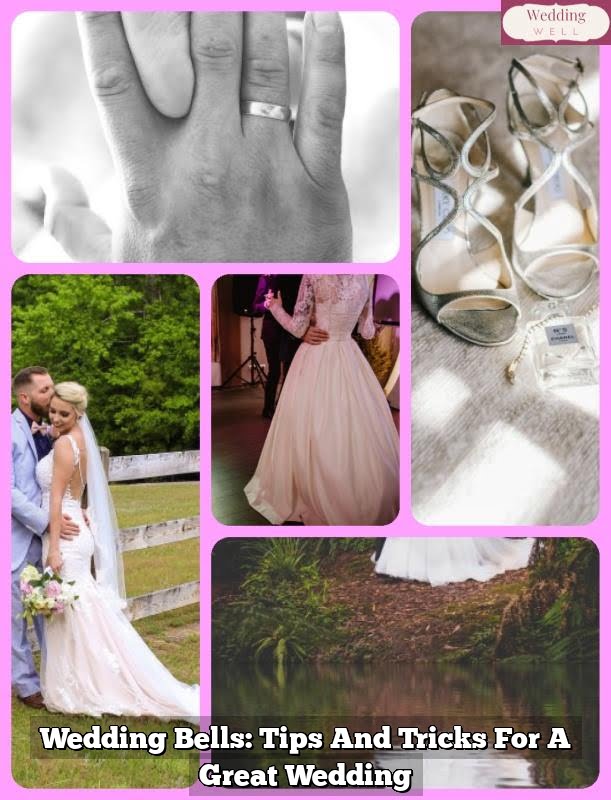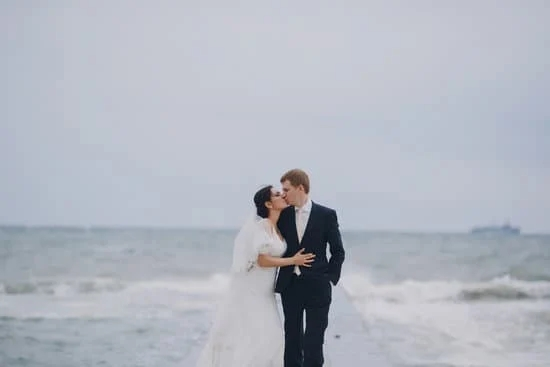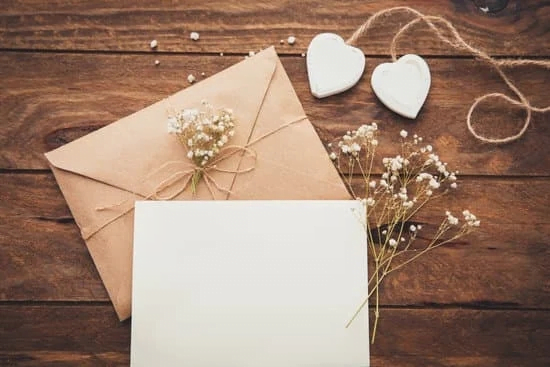What is the processional in a wedding? The processional is a fundamental part of the wedding ceremony, symbolizing the formal beginning of the marriage.
As the bridal party and family members make their way down the aisle, they set the tone for the rest of the ceremony, creating a memorable and meaningful experience for everyone involved. In this article, we will explore the significance of the processional in a wedding ceremony and dive into its rich history, traditional order, modern variations, music and timing, etiquette, as well as ways to personalize this special moment.
The processional in a wedding holds deep cultural and historical significance, with roots that date back centuries. Understanding this tradition provides insight into its importance and helps to create a more meaningful experience for the couple and their loved ones. Additionally, by delving into modern variations and personalization options, we can see how this time-honored ritual has evolved to fit diverse cultural, religious, and personal preferences.
From understanding the role of each participant in the processional to providing tips for smooth execution, this article aims to provide valuable insights for couples who are planning their wedding ceremony. By exploring every facet of the processional, readers will be equipped with knowledge to create a personalized and unforgettable start to their marriage journey.
Tradition and History
The tradition and history of the wedding processional stretches back centuries and is deeply rooted in various cultural and religious customs. The processional, the part of the ceremony where the bridal party and other key participants make their entrance, is a significant aspect of the wedding ritual. It symbolizes the transition from individual to union, marking the beginning of a new chapter for the couple.
Historically, the wedding processional can be traced back to ancient Roman times when it was customary for the bride to be escorted to the altar by her family members, symbolizing her transition from one household to another. In many cultures, the processional also holds religious significance, with participants walking in a specific order as prescribed by their faith tradition.
For example, in Christian weddings, it is common for the groomsmen and bridesmaids to walk down together before the maid or matron of honor walks alone, leading up to the entrance of the bride.
The role of each participant in the processional also varies depending on cultural and religious customs. For instance, in some Jewish weddings, both parents traditionally escort both bride and groom down the aisle, emphasizing not only their union but also their families’ support.
In Hindu weddings, there may be specific roles assigned to close family members or friends who play integral parts in leading or accompanying the couple during this ceremonial walk. These historical traditions demonstrate that what is ‘the processional in a wedding’ can hold deep symbolic meaning and reflect unique cultural values and practices.
The Order of the Processional
The processional in a wedding is a time-honored tradition that holds significant cultural and symbolic value. It sets the tone for the ceremony and marks the beginning of the union between two individuals. Understanding the order of the processional and the role of each participant can help create a seamless and meaningful experience for everyone involved.
The traditional order of the processional typically follows a specific sequence, with each participant playing a crucial role in the overall ceremony. Here is a breakdown of the traditional order of the processional:
1. Officiant: The officiant, often a religious or spiritual leader, leads the processional as they enter the ceremony space.
2. Grandparents: The grandparents of the couple are usually escorted to their seats by an usher or family member.
3. Parents: The parents of both partners follow next, either being escorted to their seats by an usher or walking independently.
4. Wedding party: Bridesmaids, groomsmen, flower girls, ring bearers, and any other members of the wedding party follow after the parents.
5. Maid/Matron of Honor and Best Man: The maid/matron of honor and best man come next, leading up to the arrival of the bride.
6. Bride: Finally, the bride makes her entrance, accompanied by whoever is giving her away (father, mother, both parents, etc).
Understanding this traditional order allows for proper coordination and organization during the processional.
It is important to note that modern weddings have adapted this traditional order to fit different cultural, religious, and personal preferences. Couples may choose to personalize their processional by including additional family members or rearranging the order to reflect their unique values and identities. Ultimately, understanding the traditional order provides a solid foundation for making informed choices about how to execute this important part of a wedding ceremony.
Modern Variations
Modern weddings have seen a significant shift in how the processional is conducted, with couples opting to adapt this tradition to fit their cultural, religious, and personal preferences. One of the most notable modern variations in the processional is the inclusion of non-traditional participants such as grandparents, step-parents, or even pets. This reflects a more inclusive approach to the ceremony and emphasizes the importance of these individuals in the couple’s lives.
Another modern adaptation is the incorporation of cultural or religious rituals within the processional. For example, some couples may choose to include a traditional Chinese tea ceremony, Indian Baraat procession, or a unity candle lighting ceremony within their processional. These additions serve to honor and celebrate the diverse backgrounds and beliefs of the couple and their families.
In addition to cultural and religious adaptations, modern weddings have also embraced personalization in the processional. Couples are choosing music that holds special meaning to them, such as favorite songs or pieces that evoke strong emotions. Some may even opt for live music performed by friends or family members.
Furthermore, couples are reimagining the traditional order of the processional to better reflect their values and relationships. The result is a unique and tailored experience that sets the tone for a memorable wedding ceremony.
| Modern Variations | Processional Adaptations |
|---|---|
| Inclusion of non-traditional participants | Grandparents, step-parents, pets |
| Cultural and religious rituals | Chinese tea ceremony, Indian Baraat procession, unity candle lighting ceremony |
| Personalization | Favorite music, live performances, reimagined procession order |
Music and Timing
Choosing the right music for the processional is a crucial element in setting the tone for the wedding ceremony. The music should reflect the personality of the couple and create a sense of anticipation and excitement as the ceremony begins. Whether it’s a traditional bridal march or a contemporary love song, the music sets the stage for the entrance of the bridal party and, ultimately, the bride.
Music Selection
When selecting music for the processional, couples have endless options to choose from. Some may opt for classical pieces such as “Canon in D” by Johann Pachelbel or “Bridal Chorus” by Richard Wagner, while others may prefer more modern choices like “A Thousand Years” by Christina Perri or “Marry Me” by Train. It’s important to consider not only personal preferences but also cultural and religious traditions when choosing music for this significant moment.
Timing
In addition to selecting appropriate music, timing is also essential in ensuring a smooth and seamless processional. Couples should work closely with their wedding coordinator or officiant to determine the ideal timing for each participant’s entrance.
This includes factoring in any potential delays due to venue size, number of participants, and overall flow of the ceremony. A well-timed processional adds to the overall ambiance and ensures that all eyes are on the bridal party as they make their way down the aisle.
Incorporating Personal Touches
For couples looking to personalize their wedding ceremony, incorporating personal touches into the music selection and timing can make for a truly memorable experience. Whether it’s choosing specific songs that hold special meaning to them as a couple or choreographing unique entrances for each member of the bridal party, there are countless ways to infuse individuality into this cherished tradition.
By thoughtfully selecting music and carefully planning out timing, couples can create a processional that perfectly captures their love story and sets an unforgettable tone for their wedding day.
Bridal Party and Family
The bridal party and family members play crucial roles in the processional of a wedding ceremony. Traditionally, the processional begins with the seating of the guests, followed by the grandparents of the bride and groom. Next in line are the groom’s parents, who are escorted to their seats by an usher or a family member. The mother of the bride is usually the last to be seated before the ceremony officially begins.
Following these initial steps, the bridal party takes its place in the processional. The groomsmen enter first, either walking in from the side or standing at the altar from the beginning of the ceremony. The bridesmaids then make their entrance, walking down the aisle individually or in pairs.
As for family members’ involvement, it is common for them to also participate in a variety of ways during the processional. In some cultures, it is customary for small children to act as flower girls and ring bearers – usually close relatives of either the bride or groom.
In modern weddings, many couples choose to personalize their processional by including additional family members such as siblings or other close relatives. This adds a unique touch and can be a meaningful way to involve important people in this special moment. As weddings continue to evolve, so do these traditions and methods of involving loved ones in one of life’s most significant events.
| Procession Order | Traditional Role |
|---|---|
| Grandparents of Bride/Groom | Seated first |
| Groom’s Parents | Escorted to seats |
| Mother of Bride | Last seated before ceremony |
Processional Etiquette
Arrival and Seating
When it comes to the processional, proper etiquette begins even before the ceremony starts. Guests should arrive at the wedding venue with enough time to be seated before the processional begins. It is important for guests to be respectful of the start time specified on the invitation in order to avoid disruption during the processional. Ushers or designated individuals can assist in guiding guests to their seats, especially if there are reserved sections for immediate family members or VIP guests.
Respecting Cultural and Religious Traditions
It is crucial to acknowledge and respect any cultural or religious traditions that may influence the order or structure of the processional. Some cultures place a significant emphasis on specific family members or elders leading the procession, while certain religious ceremonies may have strict guidelines regarding who can participate in the processional. Understanding and adhering to these traditions shows respect for the couple’s heritage and beliefs.
Timing and Pace
During the processional, it is essential for participants to maintain an appropriate pace as they walk down the aisle. The timing of each individual’s entrance should be coordinated to create a seamless flow, allowing each person their moment while also ensuring that they do not linger too long at the altar or disrupt the overall rhythm of the event. Rehearsing the processional in advance can help everyone understand their role and make adjustments as needed for timing and pace.
Personalizing the Processional
In conclusion, the processional in a wedding holds significant cultural, historical, and traditional importance. Understanding the origins and purpose of the processional helps couples personalize their ceremony to fit their unique preferences while still honoring the ceremonial tradition. From the order of the processional to music selection and timing, each aspect can be tailored to reflect the couple’s personalities and values.
Modern weddings have adapted the processional to fit different cultural, religious, and personal preferences, allowing for a diverse array of options for couples to consider. Whether it’s incorporating unique music choices or including meaningful family members in the processional, there are endless opportunities to make this part of the ceremony truly special. By following processional etiquette and providing guidelines for a smooth and respectful experience, couples can ensure that their personalized touches enhance the overall wedding ceremony.
The processional offers a wonderful opportunity for couples to create an unforgettable moment that captures their love story. From involving cherished family members to incorporating personal touches such as customized music and meaningful traditions, the possibilities are endless. Ultimately, personalizing the processional allows couples to create a memorable and meaningful experience that sets the tone for a beautiful wedding day.
Frequently Asked Questions
What Is Processional and Recessional?
Processional and recessional are the two key moments in a wedding ceremony. The processional occurs at the beginning of the ceremony when the wedding party walks down the aisle, while the recessional happens at the end, as they exit.
Who Walks First in a Wedding?
Traditionally, the first person to walk in a wedding is the officiant or celebrant. They are followed by the grandparents of the bride, then grandparents of the groom, and then parents of the groom. Finally, the mother of the bride is escorted to her seat.
What Are the Steps of the Processional?
The steps of the processional typically involve different members of the wedding party walking down the aisle in a specific order. After all guests are seated, music signals the start of the processional as it moves from family members to bridal party members and ultimately culminates with the entrance of the bride.
Each step is carefully choreographed to create a meaningful and beautiful moment.

Welcome to my blog about home and family. This blog is a place where I will share my thoughts, ideas, and experiences related to these important topics. I am a stay-at-home mom with two young children. I hope you enjoy reading it! and may find some helpful tips and ideas that will make your home and family life even better!





